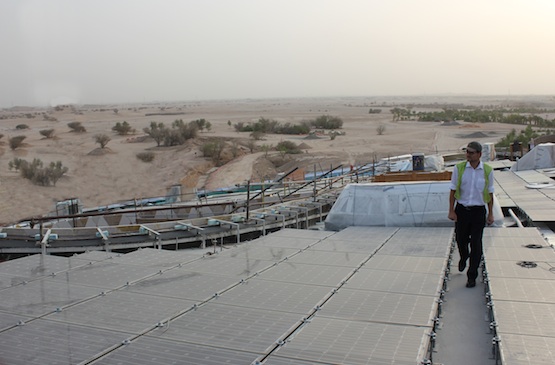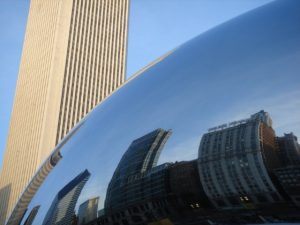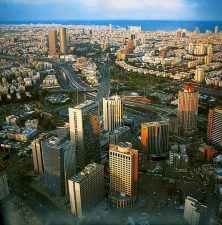 Dieter Moor of ertex solar examines the installation of his company’s solar project in Al Ain.
Dieter Moor of ertex solar examines the installation of his company’s solar project in Al Ain.
Finally the Middle East is attuned to the numerous benefits of solar energy, and large scale Photovoltaic (PV) and Concentrated Solar Power (CSP) plants are popping up all over the region. There’s Shams 1 outside of Abu Dhabi, the largest CSP plant in the world, Egypt’s hybrid CSP plant, Kuraymat, and most recently, Masdar inaugurated the largest PV plant in Africa, which is now generating a whopping 10 percent of Mauritania’s energy supply.
But small scale solar is catching on less quickly. In addition to being prohibitively expensive for most people, the government offers very little incentive for residents of the Middle East and North Africa (MENA) to coat their roofs with costly solar modules. It’s a shame, because a new study shows that affixing Building Integrated Photovoltaics (BIPV) to windows in Abu Dhabi could slash energy costs by as much as 33.5 percent.
BIPV = very good
Mohammad Katanbaf, an architect at KEO International Consultants Abu Dhabi, recently set out to determine how much energy businesses would save if they incorporated a certain number of BIPVs on their windows, according to The National.
For the sake of accuracy, he used very sophisticated computer modeling to match the United Arab Emirates’ specific climate, since temperature, wind, dust and other climatic conditions affect the efficiency of solar modules.
He told the paper that although he was expecting savings, their full extent surprised him. Trouble is, it’ll be a cold day in the desert if they are ever widely used, since the cost of BIPV modules is 30 percent higher than regular PV panels and even those aren’t hugely popular.
Elsewhere, feed-in-tariffs, a government protocol that purchases clean energy from whoever’s got extra, encourages residents and corporations to incorporate BIPVs or regular panels as a long term investment.
But in MENA, not only are governments a little slow to establish attractive FiT plans, but they also subsidize energy costs such that none but the most devout environmentalists are really motivated to spend the money necessary to either get off or reduce their dependence on the grid.
(Curiously, Iran did quit dirty energy subsidies and survived the ordeal – before the west intensified sanctions.)
Daniel Pedroso, Regional Manager of BIPV manufacturer Isofoton told The National that BIPVs won’t become a viable option in the Emirates until the government creates incentives that make the investment worthwhile.
The option is on the table, and Dubai’s Electricity and Water Authority (Dewa) is looking into it, but nobody is going to make sudden moves given the overall instability gripping the region.
And if you want to geek out on the stats, Katanbaf published his findings in the January edition of the journal Engineering.
Top image via ertex solar



